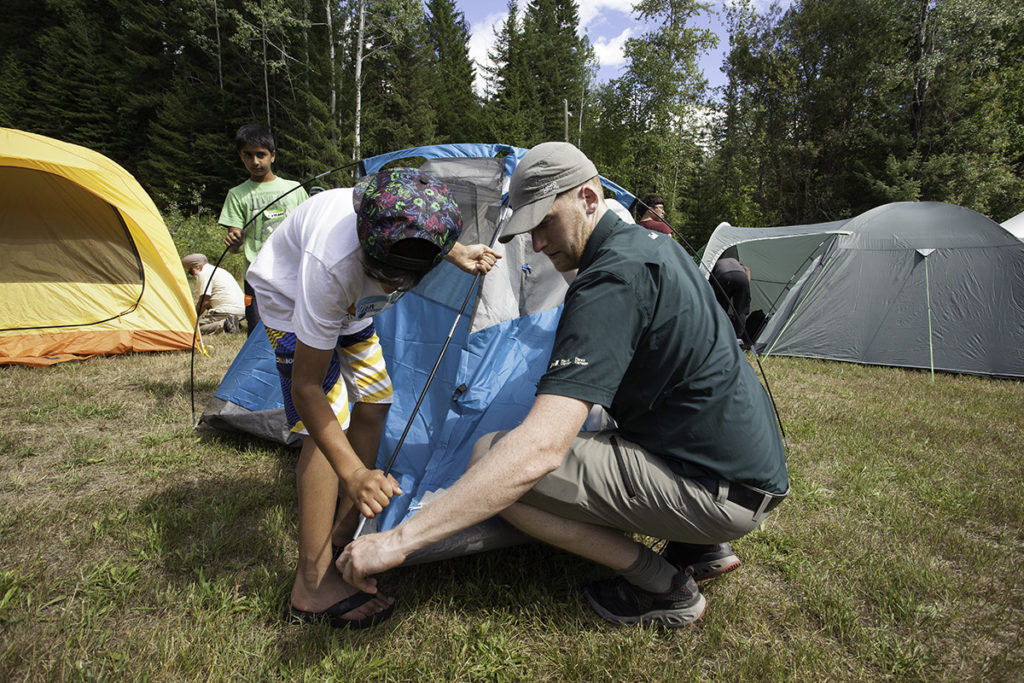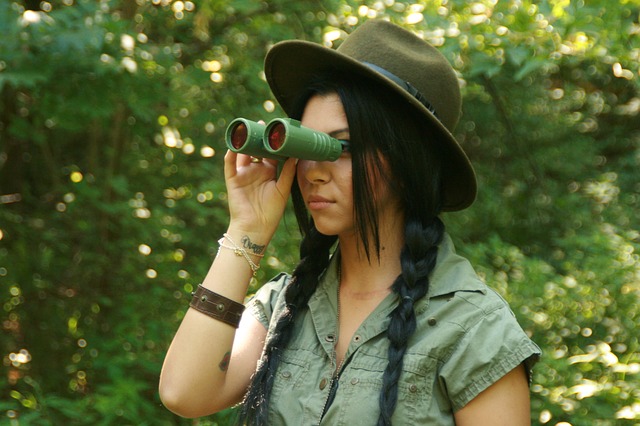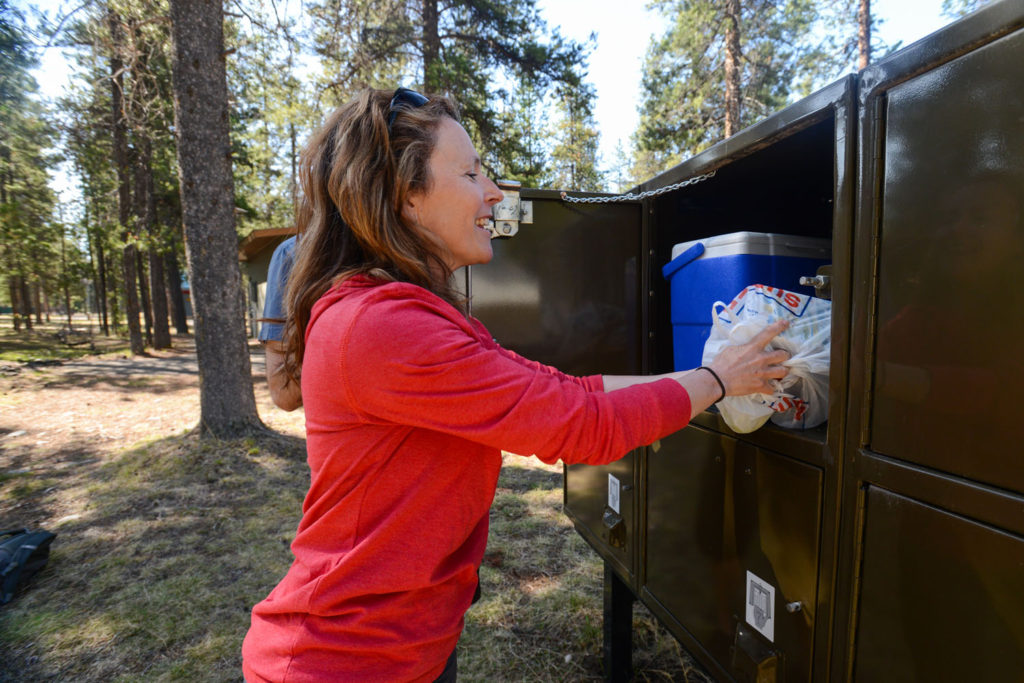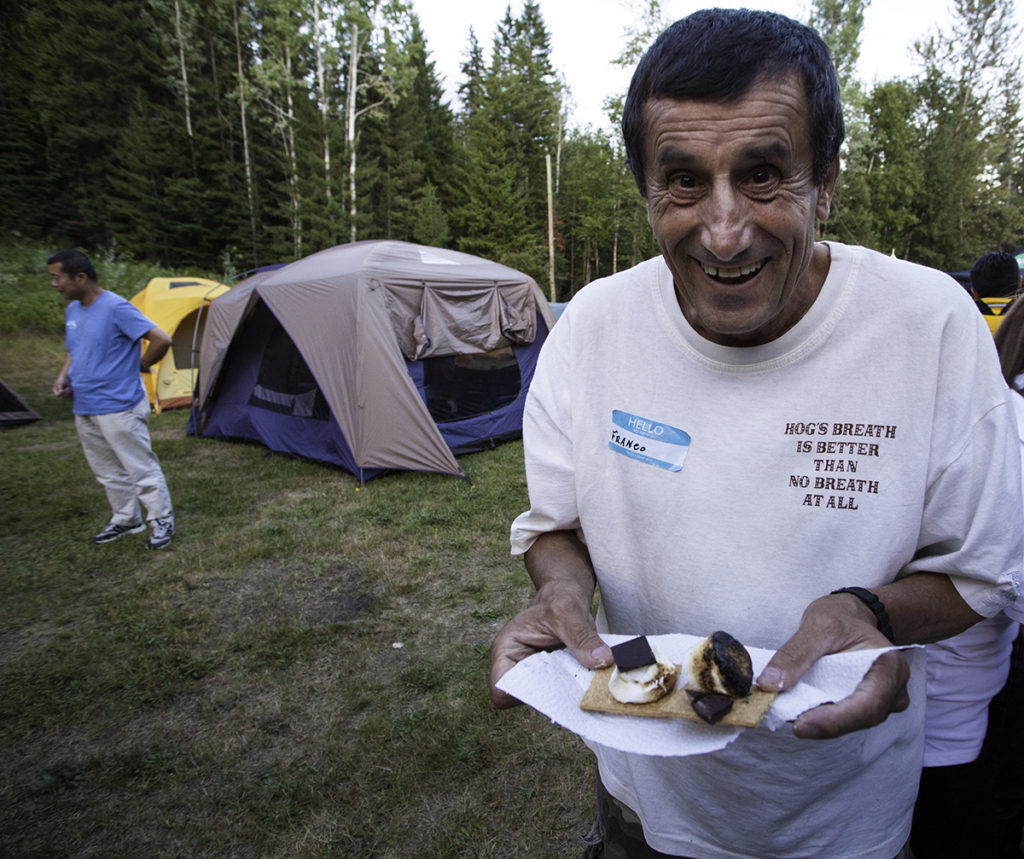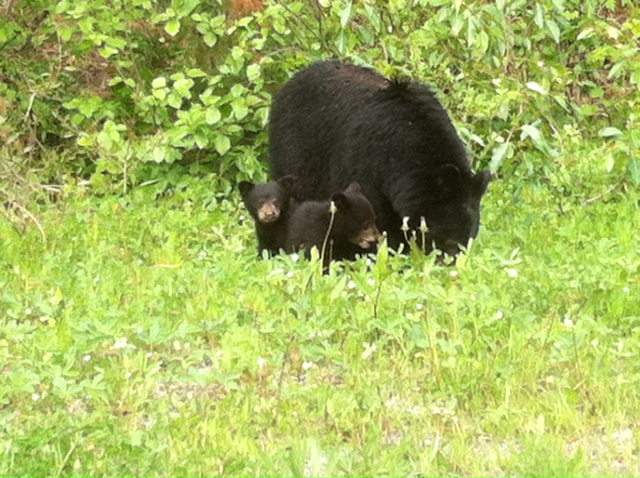
Newcomers learning to camp saw a black bear and her cubs. The bears were far away. They took pictures of the bears.
Photo – Parks Canada
LEVEL 2
Newcomers to Canada enjoy learning about camping and wildlife.
Last year we went camping. We camped in a national park.
We woke up very early. We went bird watching. We didn’t see any birds.
We saw a black bear and her cubs!
We were very surprised.
The bears were far away from us.
We were very quiet.
Visit the links
We took lots of photographs from a distance.
Then the bears walked back into the forest.
Now we have a great story to tell our friends and family.
Bears like to be alone.
Never go near a bear, especially a bear with cubs. Bears are dangerous.
Parks Canada protects bears.
Parks Canada helps newcomers learn how to camp.
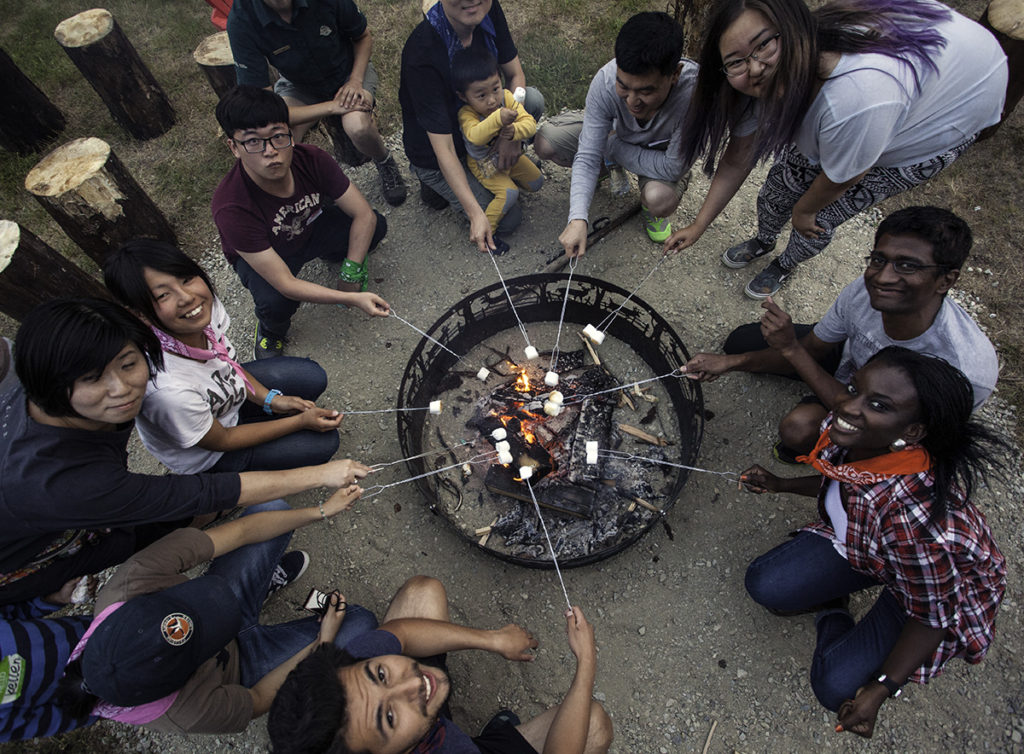
Newcomers learning to camp are roasting marshmallows for s’mores over the campfire.
photo – Parks Canada / Rob Buchanan
Learn-To camp is a program for new Canadians. They go camping.
National parks are a great place to see wildlife. Parks Canada plans activities to help people learn. They learn about wildlife and camping.
At Learn-To Camp we:
Campers learn how to respect plants and animals.
It is important to understand what wild plants and animals need to be healthy and safe. We can help save these special places for our children to enjoy when they grow up.
Follow these tips:
- always give wildlife space
- never feed wildlife
At our national parks we say “take only photographs, leave only footprints”. This means we try not to impact the environment or wildlife.
Remember to bring your binoculars so you can safely view wildlife from a distance.
We do not want to attract wildlife to our campsites.
It is not safe for wildlife to be in our campsites.
What is a s’more?
A s’more is a tasty dessert. S’mores are easy to make over a campfire. They are called s’mores because you always want “some more.”
All you need are graham crackers, chocolate, marshmallows and a campfire.
Click on this link to find out how to make s’mores.
Are you interested in learning to camp?
Click on these Parks Canada links to learn more about the Learn-to Camp program:
Learn-To Camp program
Where can I participate in Learn-To camp?
Article and Teacher’s Notes contributed by Amy Clarke
Partnering and Engagement Officer
Mount Revelstoke & Glacier national parks
Parks Canada / Government of Canada
Agente des partenariats et de l’engagement
Parcs nationaux du Mont-Revelstoke et des Glaciers
Parcs Canada / Gouvernement du Canada
